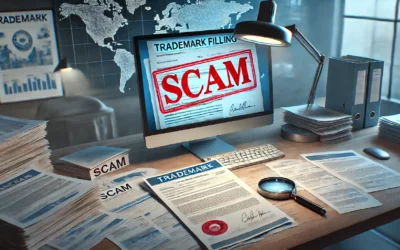As we have said before in our other blog posts, suggestive brand names are often very useful. They are registrable (can be protected as trademarks) and they indicate some valuable information about the product or service.
Here are 10 examples of great suggestive trademarks.
1. Tangle Teezer
The name Tangle Teezer suggests that the product “teases” tangled hair. Without saying it directly, the name indicates in a unique way what the product does.
2. Tesla
Nikolai Tesla was a famous inventor and engineer, working on electricity related inventions together with Thomas Edison and George Westinghouse. Using his name for an electric car brand is suggestive, because Tesla is most famous for his work in electricity related inventions. The name suggests a particular quality of a product (the way the motor is powered) without directly describing it. It’s important to realise that using a real person’s name as a product name can raise some legal questions. Some countries limit the possibility of registering surnames, some put limitations on marketing of products bearing a famous person’s name, and often a famous person or her estate has registered the name as a trademark already. So, there’s a host of questions that need to be considered with this type of suggestive naming.
3. Shopify
Shopify could also be considered an invented word as it does not have a dictionary meaning. It is also a suggestive trademark in that it clearly refers to shopping. Adding the suffix “ify” it seems to be a relatively common way to name a product or service. Other examples include Spotify, Taxify, Markify, Sendify, Workify, Bankify, etc. This seems to be a trend.
4. KitchenAid
Aid in the kitchen. The name suggests what the product does. It helps you with kitchen chores. The name borders on being descriptive. The EUIPO has rejected a bunch of similarly constructed names, such as FastAid (fasting products) and ScanAid (kits for scanners). It is often difficult to assess where the line between being suggestive and descriptive goes. Many people would probably consider KitchenAid directly descriptive (it has no doubt acquired distinctiveness through long term use). The more unusual the descriptive term is in the context, the better the chances that it will make the mark distinctive. For example, TurboTax is a tax software that, according to its name, makes filing tax returns super fast.
5. AirBus
Buses in the sky. The name is not descriptive because buses are land vehicles that do not fly. LandBus or TerrainBus would be descriptive for land vehicles, but AirBus is not descriptive for aerial vehicles.
6. Greyhound
Greyhound is a very fast dog. Naming a bus service the same is a reference to the quality of the service, namely its speed. Animal references are quite common. Jaguar (cars) and Puma (apparel) are obvious examples. Both Jaguar and Puma are agile, sporty and fast, so this image transcends to the brand as well. Using animals to give some impression of the quality of the product or service does not necessarily need to be verbal. For example, Lacoste’s logo is famously a crocodile. The founder of the brand, Rene Lacoste, was a tennis professional whose nickname was “the Crocodile” because of his tenacity.
7. Leanergy
Trademark Leanergy is a combination of two words: lean and energy. Combining two words is a common way of forming a trademark. Another famous example would be FedEx (Federal Express). While Leanergy is suggestive (lean energy), FedEx might not be so obvious. Sometimes the combination can also be completely fanciful without any clear meaning. The same applies to acronyms, such as IBM for International Business Machines. The thing to note with this type of naming is that often the combination of two descriptive words is still descriptive, so a little extra twist like misspelling is often needed.
8. Reddit
Talking of misspellings. Reddit is a misspelling of “read it” (past tense, read sounds like “red”). Phonetically this sounds like you are saying that you read it (past tense). Sometimes misspellings can work well as trademarks. In practice, it is often difficult to assess where the misspelling is sufficient to make the otherwise descriptive expression distinctive. In most cases minor or commonly used misspellings do not suffice. For example, Lite (light), 4U (for you) or c-thru (see-through) would still be descriptive as the meaning is too obvious and easily detected. Using misspellings is generally speaking a risky strategy, in most cases btr 2 b avoided.
9. Fiji
Fiji is a luxury water brand. Fiji is also a country and archipelago in the South Pacific Ocean. Sometimes references to geographical places can suggest something about the product or service. For example, the name of an exotic island for a beach wear brand or the reference to a cold place (e.g. North Pole) for ice cream might work well. Lidl has used this with for example their tea brand Knightsbridge. Knightsbridge is an upscale area of London, and the UK is commonly associated with tea. Naming a tea brand Knightsbridge creates an image of a high quality tea.
Like misspellings, geographical names can be tricky. A trademark cannot be registered if it describes its geographical origin. This is particularly the case where the location is particularly known for particular products or services. So Milan would not be trademarkable as a fashion brand or Geneva as a watch brand. If there is no apparent connection (Mont Blanc for pens), then the name is protectable.
10. Lidl trademarks
Lidl is the undisputed king of suggestive trademarks. Here are some.
LUPILU for children’s products. Lupilu doesn’t probably mean anything, but sounds like a baby is talking, so the immediate association is for children.
Solevita for juices. The name is made of “sun” and “life” in Italian, giving the impression of freshness and vitality.
Duc de Coeur for French foods. The name literally means “Duke of heart”. The name does not describe the products in any way, but since it looks and sounds French, it gives an association to the products being French.
Crusti Croc for snacks. The name obviously refers to crusty and crunchy products, and in combination the words also sound a bit like a crunching sound.
Gelatelli for ice-cream. Derived from the Italian word for ice cream (gelato) and finished with a typically Italian sounding suffix “elli”, the name is instantly associated with ice cream without being descriptive.
El Tequito for Mexican foods. El Tequito doesn’t mean anything, but sounds and looks Mexican. The name could be derived from small taco (taquito) or it could be seen to refer to tequila. Being something of a mix of taco and tequila, the name certainly appears Mexican.
VITA D’OR for oils and margarines. Name “vita” refers to life and vitality, and “d’or” to “gold”, which is the colour of butter or vegetable oils.
Here are some other examples from Lidl:
Aquapur, Miomare, Dentalux, Floralys, Vitasia, Rivercote, Optisana, Freshona, McEnnedy, Snaktastic, Romanetti, Eridanous, Coquette, Hatherwood, Yogosan, Crownfield, Harvest Basket, Salvamed, Nevadent, Españero, Bellarom and Italiamo.
Conclusion
Suggestive trademarks are very good because they convey something about the product (something that most marketers want) while still being protectable as a trademark. For startups and SMEs with limited marketing budgets, suggestive names are great.



